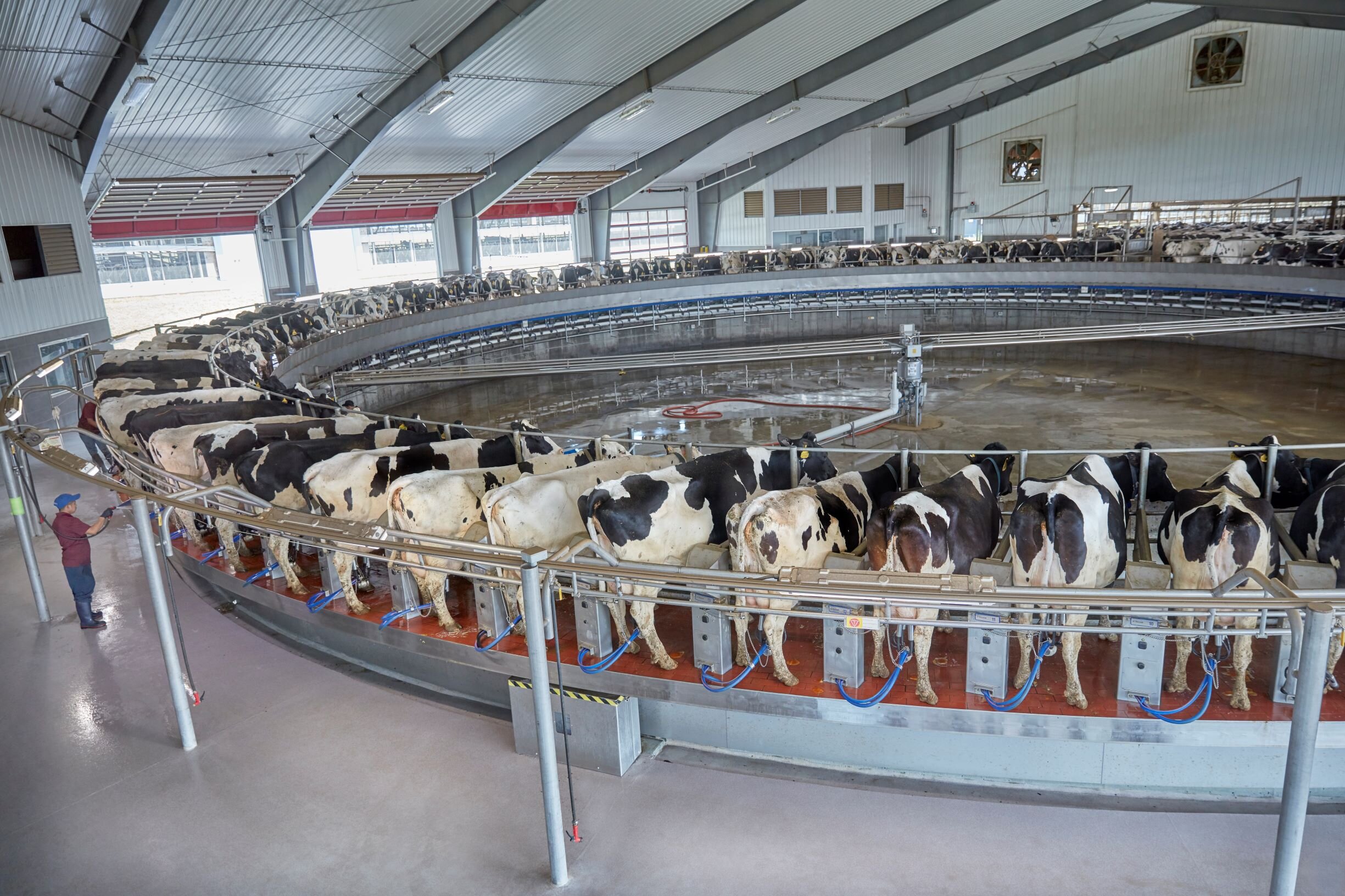Why have scheduled maintenance?
Why Preventive Maintenance?
YOU KEEP YOUR VALUABLE HERD HEALTHY AND MAXIMIZE MILK PRODUCTION AND QUALITY
Any part of a milking system that is not functioning at top efficiency may result in reduced yield and increased milking time. Lack of maintenance and thorough cleaning effects milk quality. However, regular servicing on a planned basis keeps labor cost to a minimum, yields at maximum, and ensures consistent high milk quality.
SCHEDULED MAINTENANCE IS DESIGNED TO STOP PROBLEMS BEFORE THEY START
Your milking equipment works harder than anything else on your farm - except you - many hours each day, 365 days a year. Breakdowns cost time and money and cause unnecessary stress for you and your herd. Regular servicing is essential to detect inevitable wear and tear before expensive problems occur. Prevention is better than cure - and it's cheaper.
SAVE MONEY
Unexpected breakdowns and abnormal wear will result in increased milking time, poor milk quality, reduced yields, and loss of milk; all factors that decrease the profitability of your operation. With scheduled maintenance programs, these problems are reduced to an absolute minimum, and you will maintain or even increase profitability.
WHAT DO WE DO ON SCHEDULED MAINTENANCE?
Scheduled Maintenance Checklist
1. Vacuum System
a. Check belts for proper alignment and wear
b. Flush oil reclaimer, replace filter, change oil
c. Adjust oil drippers
d. Check motor amp draw and volts
e. Check CFM’s- compared to previous checks
f. Clean and test regulator
g. Check effective and manual reserve
h. Verify distribution tank drains functioning properly
i. Grease bearings as directed by manufacturer
j. Clean or replace vacuum pump inlet filter
2. Pulsation System
a. Disassemble and clean each pulsator
b. Install pulsator rebuild kit
c. Inspect fresh air lines and replace as needed
d. Check and clean stallcocks
e. Graph each pulsator with VPR200 to ensure proper operation
3. Milker Units
a. Check units for cracked bowls or damaged nipples
b. Verify claw bleed hole not plugged
c. Ensure proper milk hose alignment
d. Inspect and replace hoses, gaskets, and shutoff valves as needed
e. Clean and test service regulator
f. Inspect CIP jetters, seals, and drains
4. Receiver and Milk Lines
a. Check amp draw on transfer pump motor
b. Replace milk pump seals
c. Inspect milk/wash valve
d. Inspect probes for cleanliness and proper operation
e. Verify LLC or Smooth Operator performing properly. Notate Ohms
f. Inspect and or replace rubber drain valve parts
g. Inspect and or replace discharge valve
h. Verify milk line slope
i. Inspect and replace pipeline gaskets as needed
j. Check/replace milk inlet gaskets
5. Washing System
a. Verify all cycles operating
b. Inspect wash diverters for wear. Replace rubber diaphragms, plugs, gaskets.
c. Check drains for proper operation
d. Verify air injector settings and record
e. Clean/replace air filter
f. Record temperatures in all cycles
g. Record water level in vat
h. Verify proper operation of milk/wash valve
i. Inspect/replace chemical pump hoses/diaphragms
j. Check/replace chemical cups, gaskets, drop hoses
k. Check water screens and supply hoses
l. Verify chemical dosage in each cycle and record
m. Record PPM of alkalinity and chlorine
n. Check proper operation of hot water heater
6. Automatic Takeoffs
a. Inspect milk valve for proper operation
b. Record sensitivity Ohms, milk flow threshold, pounds of milk for second
c. Replace all rubber goods, milk valve gaskets, and air valve gaskets/seats
d. Ensure air bleed hole open
e. Inspect/replace vacuum hoses as needed
f. Verify operation off all cylinders- clean and lubricate
g. Check and service air valve
7. Crowd Gate and Parlor
a. Lubricate gate hinge pins, rollers, including arms
b. Inspect lift straps for wear
c. Check power cords and connections
d. Check oil levels of gear and chain boxes
e. Check chain tension and sprocket alignment
f. Inspect wheels for wear
g. Inspect proper operation of limit switches
h. Check proper operations of doors and gates
i. Inspect rapid exit hydraulic and air components
j. Check and verify air/oil pressure settings on exit gates, indexing rails, and entrance gates
k. Verify operation of all auto drains
l. Service air compressor per manufacturers recommendation
This checklist covers all areas of your milking system including milk lines, pulsation systems, receiver groups, clusters, vacuum pumps, oil reclaimers, vacuum regulators, takeoffs, etc. While some items such as line slope and pipeline hangers only require inspection, many rubber and plastic parts are replaced if there are any signs of wear and/or inking. Your vacuum pump is the heart of your milking system and proper vacuum levels are crucial to the quality of any milking system. Therefore, all vacuum pumps are flushed/serviced, and the pump performance is checked by measuring the C.F.M. air flow.
All motor amperages are also checked and compared to the rated motor amps for reference.
Your milk cooler and tank wash system are often a neglected piece of equipment; therefore, we also inspect and service your tank wash system.
System Wash Analysis
This is an important part of our scheduled maintenance program. This includes the amount of water used, water quality, water temperatures, amount of chemical usage, strength of wash solutions etc. Also included in a wash analysis is an inspection and service of your automatic pipeline washer.
HOW OFTEN SHOULD YOUR MAINTENANCE BE DONE?
For the average milking herd, a scheduled semi-annual service is sufficient in meeting the maintenance requirements of most milking equipment. However, as herd sizes increase, so do milking times and demands on milking equipment. A quarterly or even monthly schedule may be required to meet the maintenance requirements for equipment with longer daily running times. A quarterly maintenance should also be considered for any dairy that is milking 3x/day because of the reduced downtime available to perform the maintenance. Another advantage of a semi-annual service is the cost per service is reduced.



